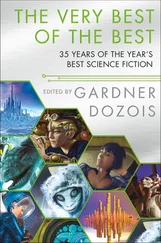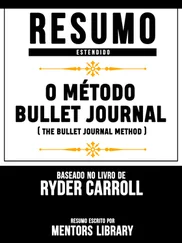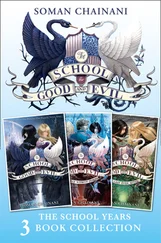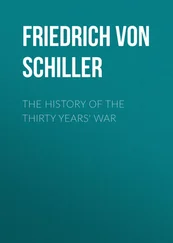If Eliade, Cioran, Noica, and Acterian had the minimal decency to refrain from openly displaying their anti-Semitism in front of Sebastian, the same cannot be said of Acterian’s wife, Marietta Sadova, who was described by Sebastian in 1936 as a future “Leni Riefenstahl in a state run by Zelea Codreanu.” “Choking with anti-Semitism,” she shouted in Sebastian’s presence, “The yids are to blame. . they take the bread from our mouths; they exploit and smother us. They should get out of here. This is our country, not theirs. Romania for the Romanians!”
Sebastian was exasperated and puzzled by the fascist fanaticism of his friends, but he persisted in his efforts to offer a rational explanation for their “barbarous mistake.” In 1937 he still believed there was “more blindness than humbug in their camp, and perhaps more good faith than imposture.” In 1939, when King Carol II violently suppressed the Iron Guard following the assassination of his prime minister, Armand Calinescu, executing hundreds of members of the Iron Guard in reprisal, Sebastian was pained by this repression and continued to feel sorry for his ex-friends.
In 1945 the famous playwright Eugen Ionescu, who was a close and unwavering friend of Sebastian’s, wrote of the Iron Guard generation, “We were morally rotten and miserable. . In terms of me, I cannot reproach myself for being a fascist. But the others can be reproached for this. Mihail Sebastian kept a lucid mind and an authentic humanity. Cioran is here in exile. He admits that he was wrong during his youth. It is difficult for me to pardon him. Mircea Eliade arrives these days: in his eyes everything is lost since ‘communism won.’ He is truly guilty. And he and Cioran and Vulcanescu, and this imbecile Noica and many others are the victims of the odious defunct Nae Ionescu. . Because of him all became fascists. . He created a stupid and horrendous reactionary Romania.”
Sebastian’s close friend the well-known novelist Camil Petrescu was not a member of the Iron Guard, but he reflected perhaps better than anyone else the Nazification and opportunism displayed by much of the Romanian intelligentsia. Sebastian was fond of Petrescu and called him “one of the finest minds in Romania. . one of the most sensitive creatures in Romania.” Like Marietta Sadova, Petrescu did not bother to hide his anti-Semitism from Sebastian. Unlike Sadova, however, he was not filled with hate; he was a smiling and casual anti-Semite. Petrescu told Sebastian that because of the Jews’ nationalism and communism (which Petruscu considered “Jewish imperialism”), they were the real source of anti-Semitism. Later, during the war, Petrescu bought into the Antonescu regime’s official anti-Semitic propaganda clichés, holding the Jews responsible for Romania’s military misfortunes and therefore blaming them for their own tragic fate. According to Petrescu, the Jews, especially the Americans, were also guilty for the continuation of the war because they were making compromise impossible.
Of course not all of Sebastian’s friends were sensitive or insensitive anti-Semites. Antoine Bibescu helped Sebastian during his military service and refused to allow anyone to utter anti-Semitic allusions in Sebastian’s presence. During the summer of 1941, when massive anti-Semitic measures were being implemented in Romania, Madeleine Andronescu, another friend of Sebastian’s, told him how ashamed she was for the humiliation being forced on the Jews. A good friend of Sebastian, the diplomat and politician Constantin Vişoianu (later one of the leaders of Romanian post-World War II emigration to the United States), whom Sebastian did not think of as a sentimentalist, said something similar to Sebastian after witnessing a group of Jews in the street: “Whenever I see a Jew, I feel an urge to go up and greet him and to say: ‘Please believe me, sir, I have nothing to do with all of this.’” Alexandra Rosetti, Sebastian’s benefactor, advised, indeed almost ordered Sebastian to leave Romania for Palestine via Bulgaria and Turkey in 1941, during the height of the deportations of Jews from Bessarabia and Bukovina to Transnis-tria. Titu Devechi, another good friend, warned him about the massive dimensions of the carnage against the Jews in Bessarabia and Bukovina. In January 1942, in Rosetti’s home, Sebastian heard another prominent Romanian intellectual, Andrei Otetea, speak with “emotion, stupefaction and occasional fury” about the Iasi pogrom in which twelve thousand Jews were killed and which Otetea called “the most bestial day in human history.”
Sebastian described with fascinating accuracy the Romanian Holocaust as it unfolded around him. In Bucharest he experienced serious discrimination but he was never deported to a concentration camp. Unlike the Jews from Bessarabia, Bukovina, and Transnistria, who were deported and massacred in great numbers, Sebastian’s torture took the form of forced labor, confiscations of property, restrictions on his ability to work and earn a living, heavy fines, and tiny food rations. Still, since he was not ghettoized, Sebastian remained in a position to witness the persecution of his less fortunate fellow Jews from Romania’s periphery, and to see how Romanian society reacted to the Holocaust.
He filled his diary with rich details (later confirmed by archival documents) of the conditions under which the deportations of Jews from Bessarabia and Bukovina to Transnistria took place during the summer and fall of 1941. At the peak of the deportations, Sebastian knew full well how the Jews were being sent over the Dniester: “The roads in Bessarabia and Bukovina are filled with corpses of Jews driven from their homes towards Ukraine. Old and sick people, children, women — all quite indiscriminately pushed onto the roads and driven toward Mogilev. . Already. . the number of Jews murdered since June is in excess of 100,000.” The diary describes in like detail how the Jews from Gura Hu-morului and Dorohoi were deported in just a few hours.
Sebastian lived through all these events in a “dazed stupor,” with “no room for feelings, gestures or words.” Like a photographer, he recorded the “nervous animation,” “the pale faces,” the “mute despair that has become a kind of Jewish greeting,” the “small groups of pale, famished, ragged Jews, carrying wretched bundles or sacks.” Well informed through his high-ranking Romanian friends, Sebastian even knew how American authorities saw Romania’s role in the war against the Soviet Union, as they did Romanian responsibility in the Holocaust.
Sebastian quickly grasped the essence of the state anti-Semitism of the Antonescu regime. In August 1941 he observed, “Everyone is a cog in the huge anti-Semitic factory that is the Romanian state.” In October that year: “Organized anti-Semitism is going through one of its darkest phases. Everything is too calculated for effect, too obviously stage-managed, not to have a political significance.” Earlier he had described the chaotic way in which these “organized” Romanian anti-Se-mitic acts were carried out.
On 23 August 1944, Antonescu’s regime was overthrown by King Michael and an alliance of several political parties. Sebastian now felt a huge sense of relief, knowing that his life was no longer in danger. But, like many Jews, he was torn between the joy of seeing the liberating Red Army and the plunder that the same army brought with it. One week after the liberation, Sebastian wrote about his elation but also about his “bewilderment, fear, doubt” concerning the liberators who raped, robbed, and looted. At the same time he was already disgusted with the opportunism of the “new ally” (Romania) of the anti-Axis coalition. “In the end,” he wrote, “the Russians are within their rights. The locals are disgusting— Jews and Romanians alike.” One week after liberation, Sebastian strongly criticized the newly ascendant Communist ideology and refused to work for the Communist newspaper Romania Liberă and its “editorial committee terrorized by conformity.”
Читать дальше











